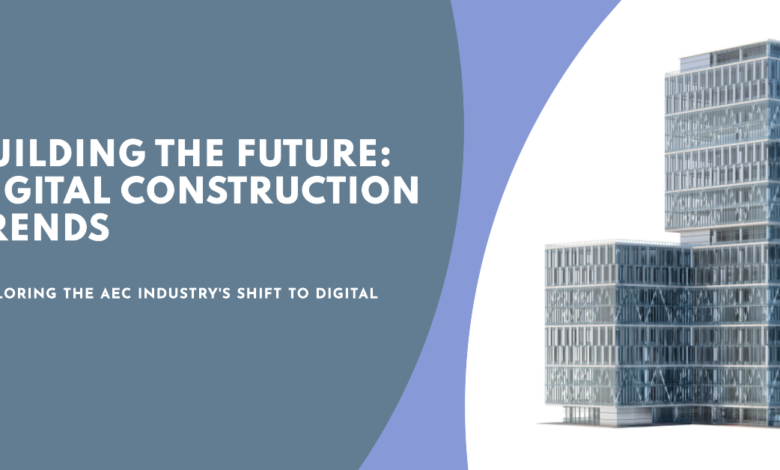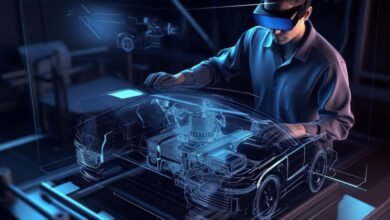What are the Construction Trends driving the AEC industry into the digital age?
Discover digital age construction trends reshaping the AEC industry. Stay ahead with technology-driven innovations.

Change is the only constant in this world. Every industry, company and individual must evolve according to the changing requirements if they want to continue to thrive. This holds true for the construction sector specifically. The construction industry has been historically very resistant to change. Choosing to use traditional methods of construction over more easier and convenient digital options. However, the past decade has also seen the sector take the much needed steps towards digitization. From minimized changed orders, increased efficiency to improved ROI and enhanced quality the construction trends are surely going to be impactful.
The construction industry could potentially thrive on technological disruption. These changes are multi-faced and impact every stage of the construction process whether it is remote work, better collaboration through digital process, drones and robotics for increased efficiency, prefabrication, invention of new materials etc. In the current article we look at the trends that are changing construction industry.
-
Digital Twin:
Building Information Modeling provides the AEC professionals all the tools they would need to plan, construct and manage buildings and structures effectively. A step beyond CAD, the data-rich 3D models allow the stakeholders to properly visualize how the project will look like when completed. Its digital collaboration capabilities enable various project teams to work on a singular model for increased speed. It also connects BIM team to data in real-time thereby facilitating informed decision making. Its other key benefit is in the form of its Clash Detection abilities. BIM can detect any inter or intra-disciplinary clash in the preconstruction stage itself reducing rework and saving cost, time and resources onsite. Moreover, the advantages provided by BIM don’t end once the building has been constructed. As-Built BIM models account for all the changes taken place onsite and provide a data-rich 3D model which can be crucial for facility management. Similarly, Scan to BIM can be utilized for renovation, reconstruction, refurbishment etc.
-
Prefabrication:
Prefabrication is the process of creating building or building components in a weather controlled factory location following which they are transported to be assembled and installed onsite. Prefabrication is gradually gaining importance in the construction sector as its time and cost saving advantages become apparent. Prefabrication is projected to reduce upto 50% of the construction time as it diminishes the impact of weather and day light on construction schedules. It also allows for increased use of drones, robotics and construction machinery which augments precision and allows to drive tighter deadlines. Similarly, it is less costly to transport partial assemblies from a factory location than it is to move pre-production resources to site. Moreover, the controlled factory environment also provides added quality assurance. Utilizing BIM for prefabrication also has a lot of value. It is possible to extract shop drawings from the BIM model that ensure accuracy in prefabrication. For instance utilizing MEP Shop Drawing Services allows to extract shop drawings, fabrication drawings etc. from the clash free BIM model that ensures MEP components like HVAC ducts, plumbing pipes, electrical wires etc. which need to be fabricated are of appropriate dimensions and that they accurately fit onsite. Finally, accelerated offsite production reduces reduces emissions, conserves water and allows materials to be easily recycled.
-
Drones:
Drones are today finding their use in many industries and it is no different in the construction sector. Using drones provides the project managers with unparalleled record of all construction activities. It can also be used for survey and monitoring of construction areas especially in projects which are located at heights, uneven grounds etc. This significantly reduces risk associated with construction sites. Drones can directly feed the information that is retrieved from site with regards to project status, quantities, availability of labour etc. and feed it directly into the BIM model. This way the BIM model is up to date allowing the cost managers, project managers and surveyors to stay on top of the project progress.
-
Immersive Technology:
Immersive Technologies like augmented and virtual reality are quickly gaining ground in the AEC Sector. Their value is seen in two ways: effective presentations and training. With virtual and augmented reality it is possible to create life-like simulations wherein the client, governmental agency or the investor can with extreme clarity see how the final design will look like. It is also possible for them to make small changes for instance in colours, layouts, size etc. to find the best final design for them. Proper visualization ensures that there is no miscommunication between the architect, designers and the clients or investors. There is a clarity of design intent leading to maximum satisfaction. Immersive Technology can be useful to create simulations of buildings or structures wherein location of components, clearances etc. are clearly defined. This will be useful to carry out quick repairing. Similarly, simulations can be created for training of heavy and risky machinery.
-
Sustainability and Green Construction Technology
The construction industry is under tremendous pressure to reduce its carbon footprint. This means that there needs to be a change in all stages of construction right from designing to building, maintenance and demolition. The very methods of digital construction like BIM significantly reduce waste. Using MEP BIM Services allows to calculate and monitor the MEP systems in terms of energy consumption, emissions etc. right from the designing stage to facility management. Similarly, prefabrication also goes a long way in enhancing sustainability. Other ways in which sustainability can be increased is through proper designing, using innovative materials, using sustainable sources of energy like solar, wind etc. From construction companies to clients everyone has understood the importance of green building. In support of the statement, in fact from 2006-2018 the number of LEED certified projects in US alone saw a rise from 296 to 67,200. Finally, the other advantages of going green include lower operating costs, improved health of the occupant, higher occupancy, durability etc.
The construction industry has not been immune to the changing market requirements or the uncertainties caused due to the global pandemic. However, It is due to these technological trends and advancements that the construction industry has managed to survive, if not thrive in 2020.




